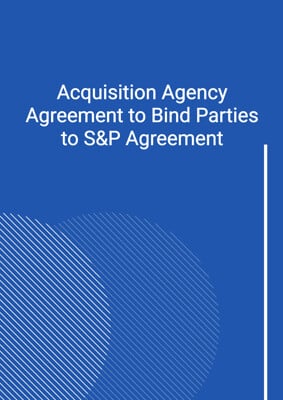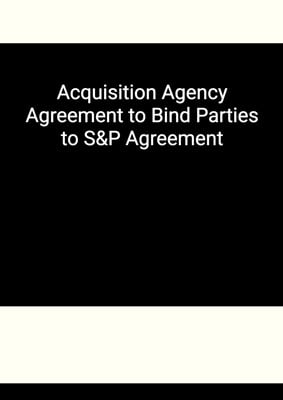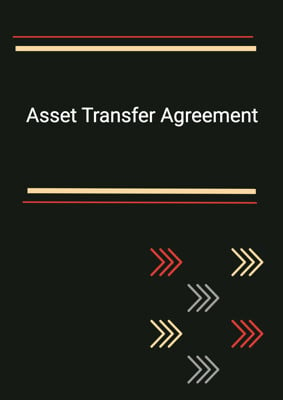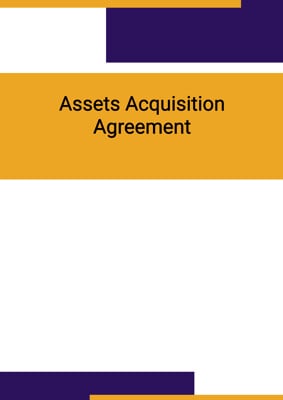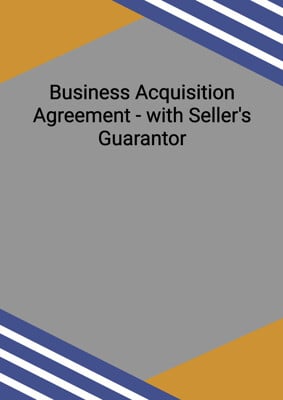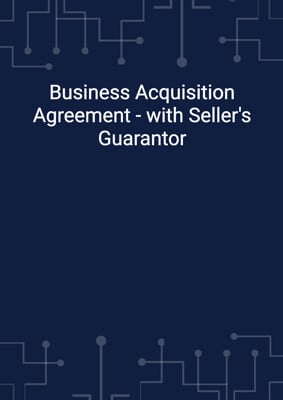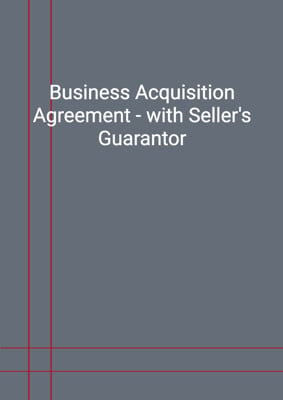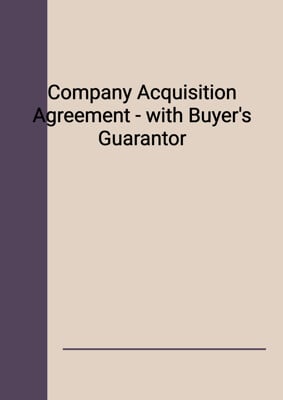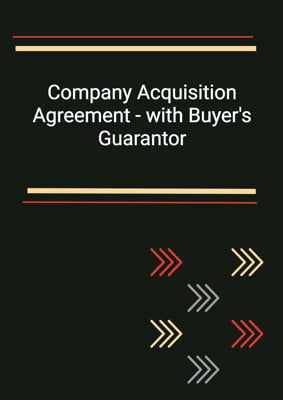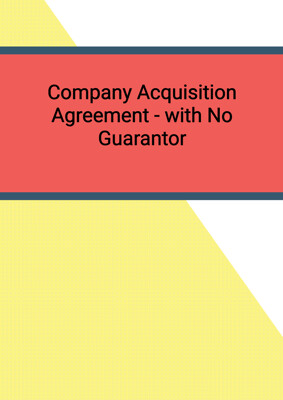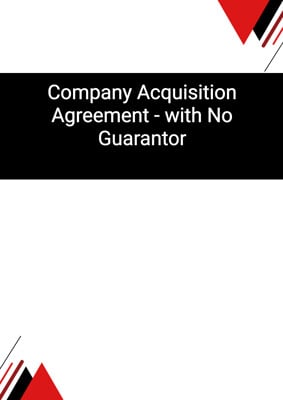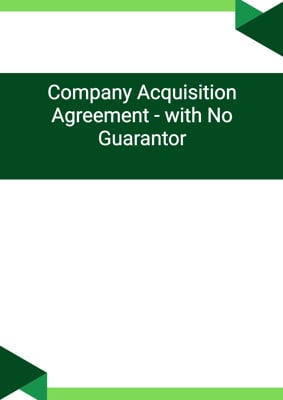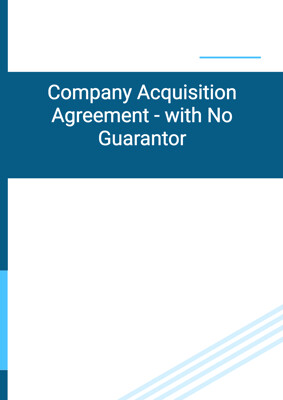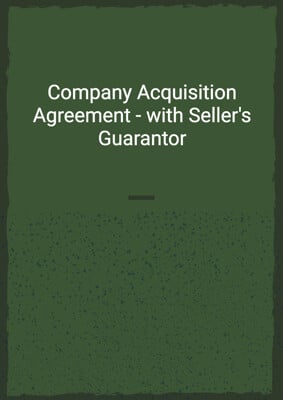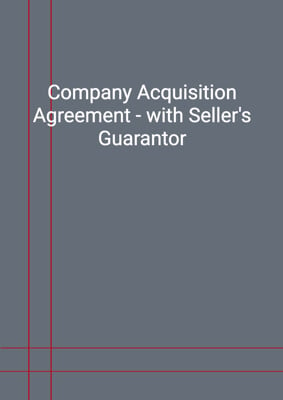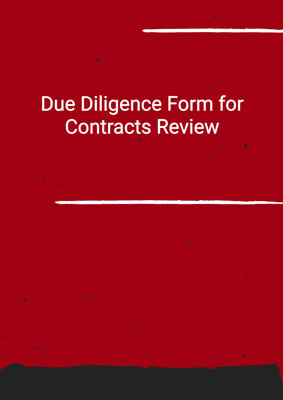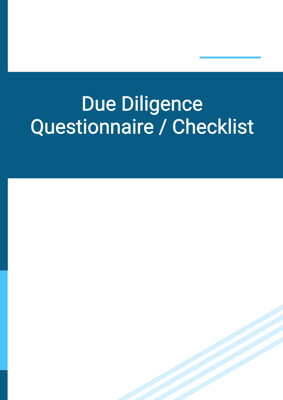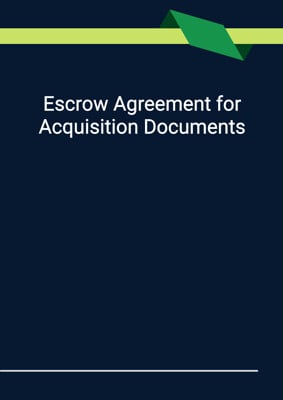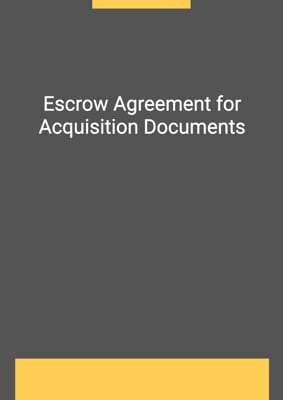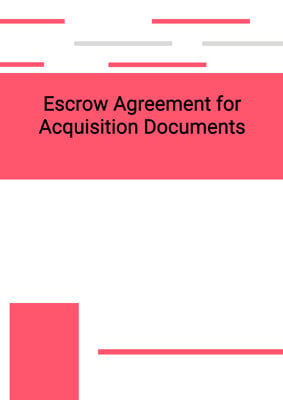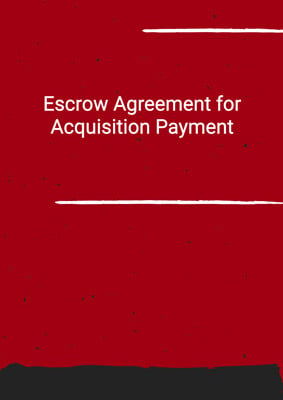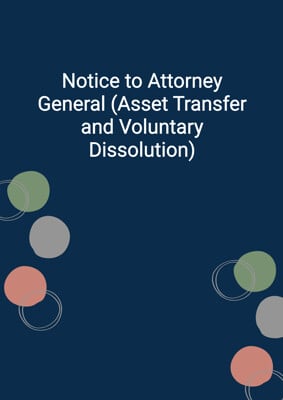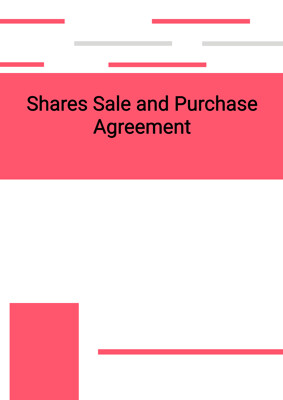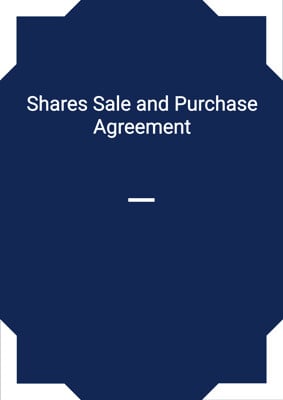
Escrow Agreement for Acquisition Payment (Paymaster Agreement)
Neutral
In a Sale and Purchase Agreement, the Seller/Buyer depositing the funds in an account in the name of independent Escrow Agents to retain deposit /part of the consideration pending completion / warranty claim / regulatory approval. This is drafted in neutral form.
How to Tailor the Document for Your Need?
01
Create Document
Fill in the details of the parties. You can click the "Fill with Member’s Information" button to complete it with information saved to your account.
02
Fill Information
Please fill in any additional information by following the step-by-step guide on the left hand side of the preview document and click the "Next" button.
03
Get Document
When you are done, click the "Get Document" button and you can download the document in Word or PDF format.
04
Review Document
The document should be signed by the authorised signatory (or directors of a company) and witnessed to complete the formality.
Document Preview
Document Description
The Escrow Agreement for Acquisition Payment, also known as the Paymaster Agreement, is a legally binding document that outlines the terms and conditions for the use of an escrow account in a sale and purchase agreement. This agreement is entered into between three parties: the buyer, the seller, and the escrow agent. The importance of this document lies in its role in facilitating secure and transparent transactions by holding funds in escrow until certain conditions are met.
The entire document is divided into several sections, each serving a specific purpose. The first section, titled 'Definitions,' provides clear and concise explanations of key terms used throughout the agreement. This ensures that all parties have a common understanding of the terminology used.
The second section, 'Deposit of Escrow Amount,' outlines the buyer's responsibility to deposit the agreed-upon escrow amount into the designated escrow account. This section also emphasizes that the funds deposited are irrevocably released to the order of the escrow agent, subject to the provisions of the agreement.
The third section, 'Treatment During Escrow Period,' details the responsibilities and obligations of the escrow agent. It states that the escrow agent holds the escrow amount on trust for both the seller and the buyer and applies it in accordance with the agreement. The section also addresses bank charges, interest or profit generated from the escrow account, and the payment process.
If applicable, the fourth section, 'Investment,' explains that the escrow agent will invest the escrow amount in short-term money market deposits to maximize interest earnings. It also allows for consultation between the parties to vary or continue such investments.
The fifth section, 'Payment of Escrow Amount,' outlines the conditions under which the escrow amount will be paid out. It provides different scenarios based on the pending completion net asset certificate, claims under warranties or tax indemnity/covenant, deposit pending completion certificate, or regulatory approval. Each scenario specifies the timeline and process for payment.
The sixth section, 'Liability of the Escrow Agent,' clarifies that the escrow agent's liability is limited to instances of breach, fraud, negligence, or wilful default. It also highlights the indemnification of the escrow agent by the buyer and the seller.
The seventh section, 'Fees and Expenses of the Escrow Agent,' addresses the fees payable to the escrow agent for their services.
The eighth section, 'Payment Details,' provides the necessary account information for making payments out of the escrow account.
The ninth section, 'Variation,' states that any changes to the agreement must be in writing and signed by all parties.
The tenth section, 'Notices and Service,' outlines the requirements for giving notice under the agreement, including methods of delivery and the addresses of the parties.
The eleventh section, 'Counterparts,' allows for the agreement to be executed in multiple counterparts, each of which is considered an original.
The twelfth section, 'Governing Law and Jurisdiction,' specifies the governing law and jurisdiction for any disputes arising from the agreement.
The thirteenth section, 'No Rights Under Contracts for Third Parties,' clarifies that only the parties to the agreement have the right to enforce its terms.
In conclusion, the Escrow Agreement for Acquisition Payment (Paymaster Agreement) is a crucial document that ensures the secure and transparent handling of funds in a sale and purchase agreement. It covers various aspects, including definitions, deposit of the escrow amount, treatment during the escrow period, payment conditions, liability of the escrow agent, fees and expenses, and more.
How to use this document?
To use the Escrow Agreement for Acquisition Payment effectively, follow these steps:
1. Deposit the Escrow Amount: Before the specified payment date, the buyer must deposit the agreed-upon escrow amount into the designated escrow account. This ensures that the funds are securely held by the escrow agent.
2. Understand the Treatment During Escrow Period: Familiarize yourself with the responsibilities and obligations of the escrow agent during the escrow period. This includes the agent's duty to hold the escrow amount on trust and the process for releasing funds as outlined in the agreement.
3. Consider Investment Options: If applicable, discuss investment options for the escrow amount with the seller and the escrow agent. It is important to agree on how the funds will be invested to maximize interest earnings.
4. Determine Payment Conditions: Depending on the specific circumstances, such as pending completion net asset certificate, claims under warranties or tax indemnity/covenant, deposit pending completion certificate, or regulatory approval, understand the conditions under which the escrow amount will be paid out. This includes timelines and required documentation.
5. Understand the Escrow Agent's Liability: Be aware of the limitations of the escrow agent's liability. They are only liable for breaches, fraud, negligence, or wilful default. Ensure that both the buyer and the seller understand their indemnification obligations.
6. Arrange Payment Details: Provide the escrow agent with the necessary account details for making payments out of the escrow account. This includes specifying the recipient's account information accurately.
7. Comply with Notice and Service Requirements: Follow the specified methods of giving notice under the agreement. Ensure that all parties receive the required notifications within the designated timelines.
8. Seek Legal Advice if Needed: If you have any doubts or concerns about the agreement or its implications, consult with a legal professional to ensure that you fully understand your rights and obligations.
By following these steps, you can effectively utilize the Escrow Agreement for Acquisition Payment and ensure a smooth and secure transaction process.
Not the right document?
Don’t worry, we have thousands of documents for you to choose from:

